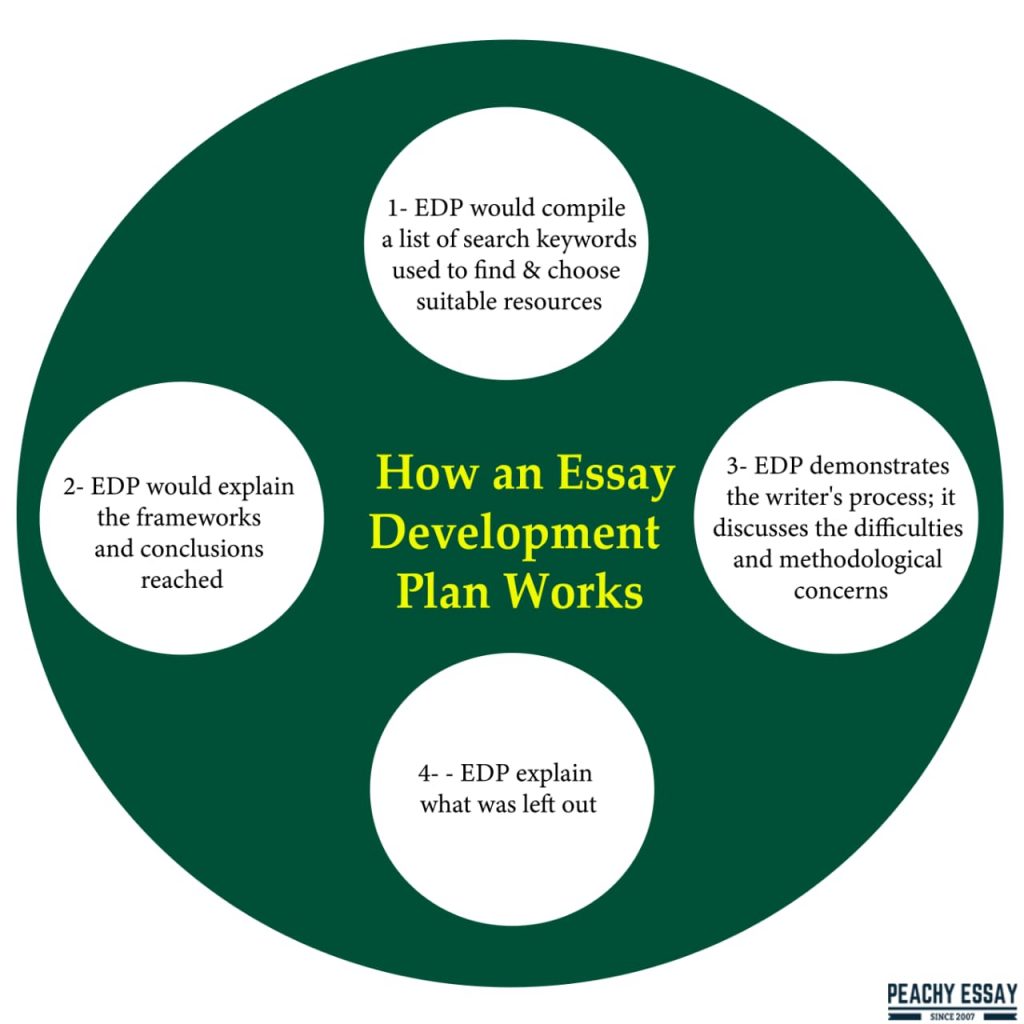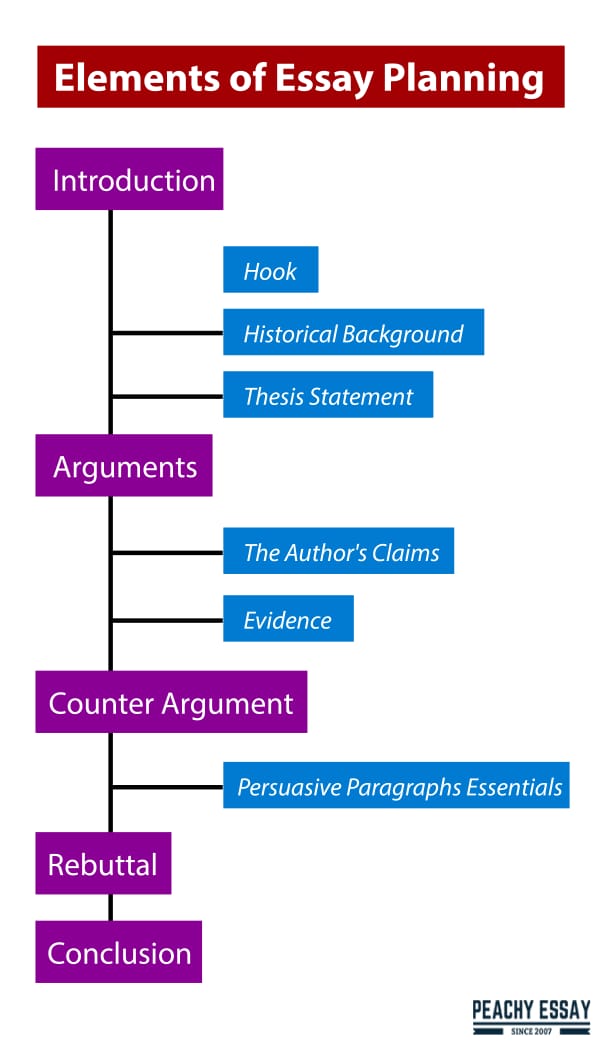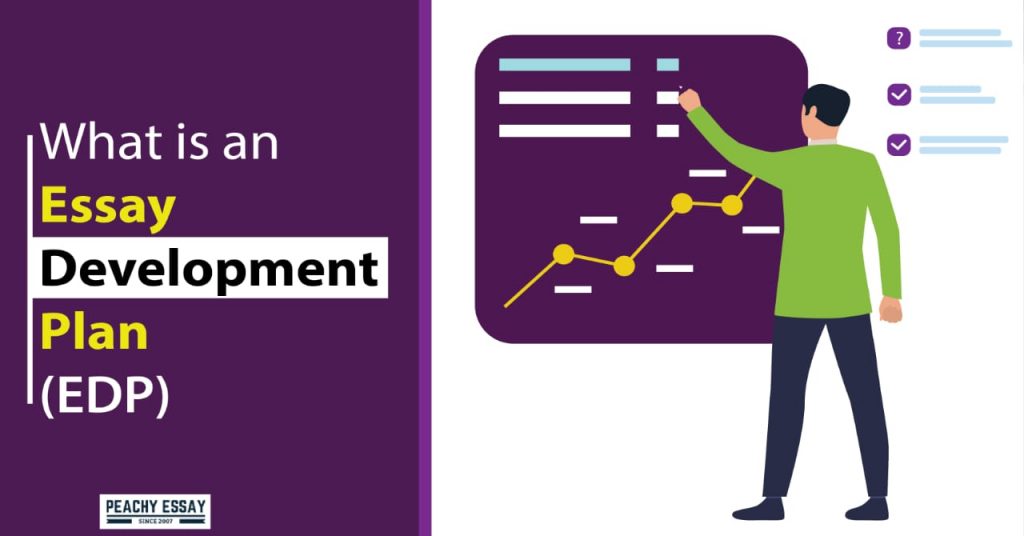A solid essay outline can help you organize your thoughts and remain on track while writing. The simplest way to describe the EDP’s usefulness is to consider it as a map, as a guide through the choices and methods used by the academic when researching and writing your paper.
What is the Best Way to Create an Essay Plan?
Your strategy should include how you’ll prove your point, as well as the proof you’ll utilize. Make your strategy based on the many sections of an essay. To do so, follow these steps:
At the top of the page, write your point in one line; you’ll expand on it in your introduction.
Make a list of three or four important elements that you believe will support your position. Make an effort to write each point in a single sentence. These are going to be your subject sentences.
Write one or two examples from your study that support your argument under each point. This may include quotations, paraphrased material from reputable writers, and so forth. When writing your essay, remember to cite your instances.
Finally, write your conclusion, which is the primary idea you want to leave in your reader’s mind.
How an Essay Development Plan Works
When academic writers write a Model Essay, they follow the same procedures as any other student in terms of research, reading, and writing, from choosing appropriate reading materials to performing analysis. The Essay Development Plan accomplishes many goals.
To begin with, it describes what the scholar looked at. It also explains why they didn’t look at some things. If you bought a Model Essay on the evolution of postmodern architecture, the scholar would describe how they framed the topic and their resources to research it.

The EDP would compile a list of search keywords used to find and choose suitable resources in databases and libraries, both online and offline. Items like “architecture,” “postmodernism,” and “architectural theory” are examples of these words. Those words would become more concentrated after they started reading and researching, maybe looking up particular architects or structures like the Vanna House or architect Robert Venturi. The scholar “displays their work” in this manner, demonstrating how they addressed and concentrated on the issue at hand. This serves as a roadmap for the customer to follow while doing their own research and demonstrating various tools and methods for extracting information from the enormous sea of information accessible online.
Second, the EDP would explain the frameworks and conclusions reached. In response to a query on economic development, the writer would summarize the main points of the major books, ideas, and philosophers that define the subject. For example, by emphasizing how various schools of thought and thinkers have expanded, agreed with, or questioned this paradigm, the “convergence debate” is a significant topic in the literature on growth.
By doing so, the academic may utilize the EDP to critically and succinctly summarize what they “found out” and how various pieces of knowledge and information connect. This assists the customer in orienting themselves inside the final essay, providing light on the importance of the issue and revealing the academic’s path and why they selected it. This method helps to de-mystify the academic process.
Third, the EDP demonstrates the writer’s process; it discusses the difficulties and methodological concerns while working on the final brief. The writer might, for example, draw attention to any gaps in the literature or unavailable resources. Alternatively, they may describe how they overcame complicated problems by using certain methods or doing more research. This is also a chance to summarize important publications and research in the area critically.
To return to economic development, the EDP would compile research on social or human capital, foreign direct investment, and financial markets and how these many sectors inform and affect one another. This can help you make sense of the vast amount of knowledge and ideas available in the academic world. The EDP is a crucial instrument for starting your own academic work since it comes with a complete bibliography. The Essay Development Plan has 650 words for short essays and 1,000 words for larger articles.
The Essay Development Plan’s fourth purpose is to explain what was left out. The writer may choose to keep certain things and reject others for a variety of reasons. For example, to keep the article focused on changes in the United States, the writer may not investigate buildings and trends in Europe to return to our architectural topic from earlier. They’d explain why research on European architects like James Stirling and Helmut Jahn was rejected.
Similarly, academics may justify omitting similar movements like “Deconstructivism” since, although linked to postmodernism, it offers a separate conceptual approach with distinct formal concerns. Previous readings may be overlooked because they are too similar to other books, repeating information rather than providing fresh insights. As a result, the Essay Development Plan describes both what the essay is and what it is not. This is a helpful technique for customers who are doing their own study since it allows pupils to assess and understand how to keep the essay under control in their own research. Within this, the EDP demonstrates how to choose the most suitable materials.
How Will an EDP Help You?
The EDP’s last function shows how specific important elements of the project may be further improved. It illustrates how important topics and sources – such as particular readings and texts – might have been further explored if the essay had followed a different path. It also explains why this is the case.
Finally, the Essay Development Plan is a product that we believe best complements the Model Essay; when compared, they show what excellent writing looks like and how a student may achieve the same level of writing and research. The Essay Development Plan also serves as a record of how an essay is produced and therefore serves as a learning tool to grasp better what goes into creating high-quality academic content in your own studies.
5 Elements of Essay Planning
Five-paragraph essays are academic writing that encourages students to improve their writing, critical thinking, analytical, and persuasive abilities. An argumentative essay, the most frequent kind of essay, enables students to examine evidence from academic sources to address a topic. Furthermore, proof is required to support the writer’s arguments, counterarguments, and rebuttals. Consequently, the introduction, writer’s arguments, counter-arguments, rebuttal, and conclusion are all included in such a document.
Here are the five elements of essay planning.

Introduction
In academic writing, it is customary for students to begin each piece with an introduction. The introduction, which follows a five-part format, sets the tone for the author’s assertions in the main body. Students must guarantee three things in this section: that they have the readers’ attention, that they have contextualized their message, and that the text’s purpose is obvious. The introduction consists of a hook, background information about the subject, and a thesis statement, in that order.
-
Hook
Students should begin the introductory section with a hook to pique readers’ interest. Ideally, this should be a strong, eye-catching remark that captures the reader’s attention and entices them to continue reading the essay. Basically, if researchers know how to create a hook, they know who they’re writing for. On the other hand, a hook sentence may be a quotation from a well-known character, a study result, a controversial remark made by a well-known figure, or a joke. Furthermore, the book’s purpose is to ensure that the audience is immediately engrossed in the essay.
-
Historical Background
The greatest method to get the audience interested in what the authors say in their work is to provide background information on the subject. To put it another way, beginning this section of a five-part essay with assertions and arguments without providing readers with material that familiarizes them with problems related to the subject is like leading blind followers. Background information, on the other hand, informs readers about the topic’s context. Assuming that the subject is marijuana legalization, students should write on the debate around the issue, covering both pro and con views. Furthermore, writers should avoid spending too much time on background material.
-
Thesis Statement
The thesis statement is the assertion that authors make at the end of their essay’s introductory section. Essentially, the purpose of this remark is to demonstrate the writer’s primary point throughout the text. Furthermore, all of the body paragraphs should include information that supports this assertion. The writers may end the introductory section by saying that the advantages of legalizing marijuana outweigh the costs, using the preceding case as an example. As a consequence, this sentence serves as the thesis for the rest of the article.
Arguments
The body is the second of five sections that make up an essay. Students dig into the subject in depth by examining evidence that supports their viewpoint. Writers, for example, use the thesis statement as a guidepost to give readers adequate information about the subject. The first portion of the body (the second section of the article) of a five-paragraph essay highlights the writer’s points. Then, in this part, the authors utilize the subject of marijuana legalization and the thesis statement to support their argument that the advantages of legalizing marijuana greatly outweigh the risks. Authors must depend on academic publications to gather evidence supporting their assertion to make their argument believable. As a result, academic, peer-reviewed journal articles, books, and government publications will be used as evidence sources.
-
The Author’s Claims
The main substance of an argumentative essay’s body paragraphs is claiming. Students make assertions in support of the thesis statement in the first half of this section. These assertions, in general, vary from the writer’s own view since they are supported by evidence from academic sources. Furthermore, writers may make as many assertions as they choose. However, there should not be too many assertions throughout the article if the author’s voice is heard. Then, for each assertion made by students, there must be evidence to back it up as well as the author’s opinion. As a result, the interpretation reflects how the authors interpret the data in the context of their main point. As a result, researchers must explain how it supports the thesis statement in addition to presenting evidence.
-
Evidence
Facts and figures discovered by students while studying the subject are examples of evidence. According to academic writing standards, authors should depend on scholarly sources to gather evidence to support their assertions. The most frequent criteria for recognizing scholarly sources are: a) sources must have an author with significant academic credentials; b) sources must be published, such as a book or journal article; and c) sources must be written in a formal language without jargon or slang.
Counter Argument
Counterarguments are addressed in the third of five sections of an essay, which is the second portion of the main text. In an ideal world, a writer would not describe reasons supporting a subject without acknowledging opposing viewpoints. The counterargument part in this instance is where the writers include debates by critics and academics that refute the thesis statement’s assertion. Writers should back up these counterarguments with academic sources to ensure that the whole article is scholarly.
Rebuttal
After stating counter-arguments to the thesis’ primary argument, students should rebut these assertions. The rebuttal is the fourth portion of a five-paragraph argumentative essay, the third half of the main text. In this instance, authors confront opposing arguments to persuade readers of the truth of the thesis statement’s assertion. Then, while writing refutations, the ideal method is to make any significant errors in the counterargument (s). Evidence from academic sources should back up such refutations, just as it should in any other instance when writers make a claim, supporting or questioning the thesis statement. As a result, the purpose of this section is to persuade readers that, despite conflicting evidence, the writer’s thesis is sound.
-
Persuasive Paragraphs Essentials
Students must ensure that what they write in these segments is convincing while constructing three body sections from five components of an essay. Each of the three body paragraphs — the argument, counter-argument, and rebuttal sections – should begin with a subject sentence in a five-paragraph essay. Scholars who understand how to construct a subject sentence, for example, realize that it sets the writer’s emphasis in that paragraph. However, all subject phrases should be linked to the thesis statement to maintain a correct logical flow. As a result, each paragraph should conclude with a closing sentence. This statement, in turn, connects the subject phrase to the thesis statement ( Generate Thesis Statement )and establishes a connection to the following section. Furthermore, evidence, analysis, and interpretation make up the material between the subject and the closing lines. It’s essentially a sandwich rule.
Conclusion
The conclusion is the last portion of an essay’s five sections. It is, in essence, a location where authors may unwind. Basically, the odds of readers losing track of the author’s goal are always greater towards the conclusion of an essay. As a result, writers should repeat the thesis statement in the conclusion section to remind the readers of the paper’s original purpose. A description of the assertions, including the writer’s arguments, counter-arguments, and refutations, should follow. Furthermore, despite opposing evidence, academics should be sure that their arguments are legitimate. The last sentence, on the other hand, should reflect the writer’s final idea. Students should give readers a sense of what would happen if their ideas were implemented in this section. In other words, they should highlight the argument’s practical consequences (s).


